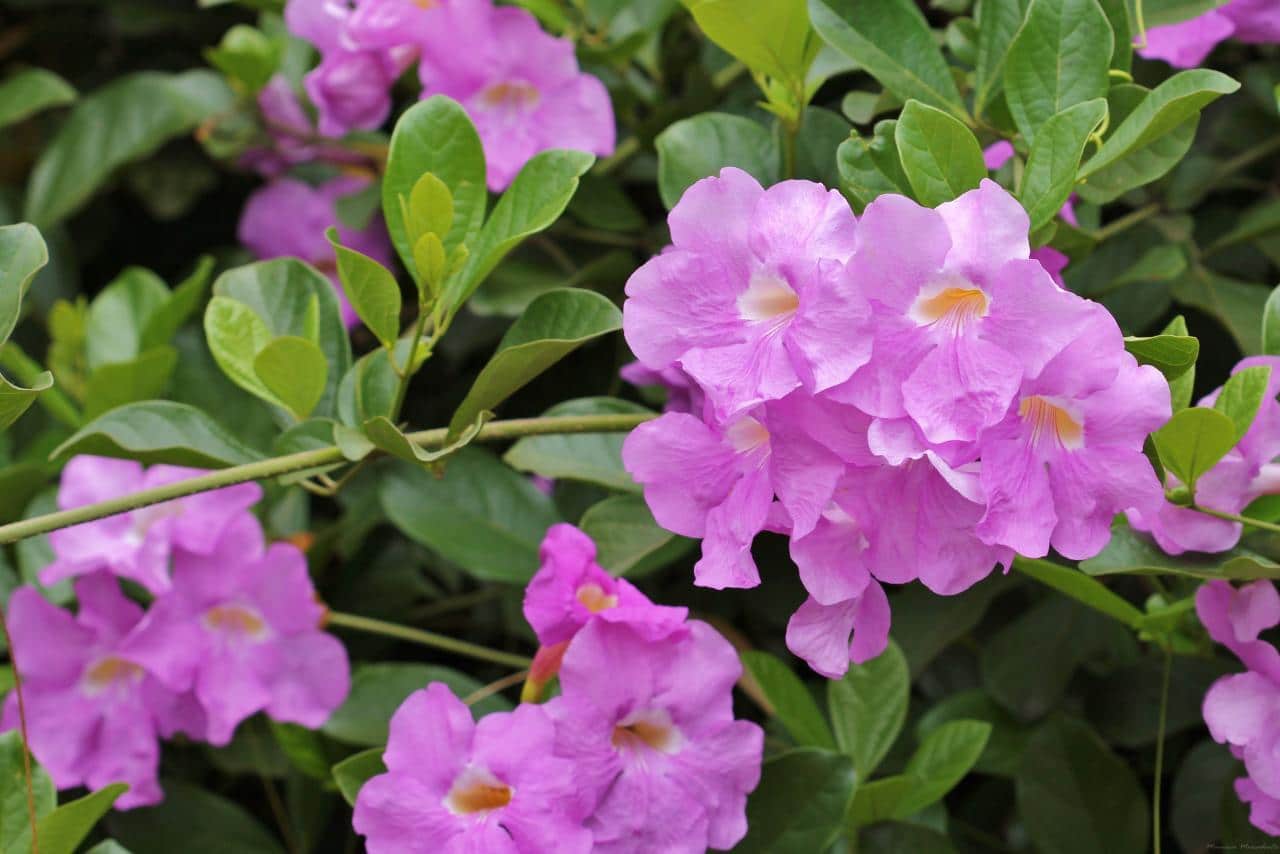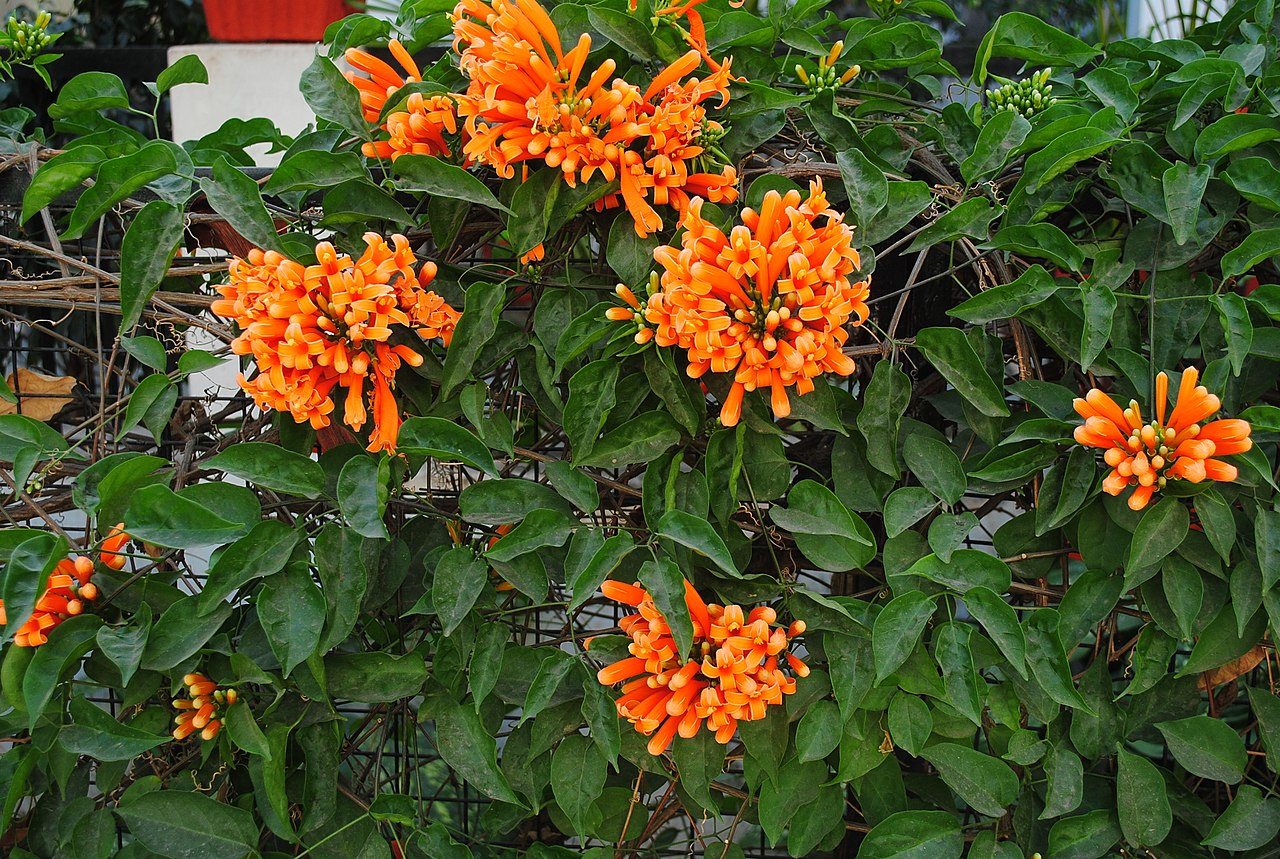
Image - Wikimedia / Saro agri
Bignons are plants that produce really pretty flowers, of good size and very cheerful colors. Many can be used as hanging or climbing plants, as they have long, flexible stems; although they can also be worked as hedges or even some, as bonsai or accompanying plants.
The genus is made up of numerous species, in total there are an estimated 499, most of them originating in the Americas. We are going to keep 7 types of bignons, easy to find for sale and to maintain.
Selection of species of the bignony family
Would you like to grow a bignonia in your garden? Then take a look at the species that we recommend while you learn what their basic care is:
Bignonia binata

Image - Mauritius Merchant
La Bignonia binata It is a perennial liana native to South America, where it is found in Argentina, Brazil, and Paraguay. Reaches a height of up to 7-9 meters. The leaves are compound, green; and its flowers are of a magnificent purple color.
It can grow in sunny or semi-shady areas, but unlike other species It will require protection from frost if it occurs.
Bignonia capreolata

Image - Wikimedia / Stan Shebs
La Bignonia capreolata is a perennial or semi-perennial vine native to the southeastern United States that can reach a height of 8-9 meters. Its stems are glabrous, and from them pinnate leaves sprout with leaflets that have an oblong-lanceolate shape. The flowers are about 4-5 centimeters long, and are orange on the outside and yellow on the lobes.
It does not need support to climb as it has tendrils, although it is recommended to put a guide on it when it is young. It can be both in the sun and in semi-shade, and resists up to -10ºC.
Bignonia grandiflora

Image - Wikimedia / Yercaud-elango
La Bigonia grandiflora (now campsis grandiflora), is a deciduous vine native to East Asia. Grows up to 9 meters, and its leaves are pinnate, and green, with serrated margins. The flowers are large, orange or red.
It has a very fast growth rate, so it is advisable to have it controlled by pruning. It grows in sunny places, and it resists frosts down to -12ºC.
Bignonia jasminoides

La Bignonia jasminoides (now pandora jasminoides) is an evergreen climber native to Australia and Malaysia known as white bignonia, bignonia jazminoide, bignonia pandorea, and pandorea. Reaches a height of 5 to 6 meters, with stems from which bright green pinnate leaves emerge. The flowers are pale pink with a dark pink funnel, or white-pink with a more intense pink-purplish funnel.
It is ideal for places exposed to the sun, although it also grows in semi-shade. But unfortunately it does not resist the cold. The temperature should not drop below 10ºC.
Bignonia radicals

La Bignonia radicals (now Campsis radicals) is a deciduous climber native to the southeastern United States. Reaches a height of up to 10 meters, developing a thick, woody trunk with numerous aerial roots. Its leaves are pinnate, ovate, and green. The flowers are orange to reddish and measure about 4 centimeters in diameter.
It is a fast-growing plant, which does not need support to climb by producing tendrils. In addition, it is not demanding, since it can live in sun and semi-shade. Resists up to -18ºC.
Bignonia ricasoliana

Image - Wikimedia / Fabio Alessandro Locati
La Bignonia ricasoliana (now Podranea ricasoliana) is a vine native to South Africa known as bignonia rose, trumpet or Pandora bush. It grows to a height of approximately 7-8 meters, developing dark green pinnate leaves. Its flowers are pink.
In cultivation it is a plant that has to be put in a protected place. Tolerates sun and semi-shade, but not frost. It requires support for climbing, since it lacks tendrils.
bignonia venusta

Image - Wikimedia / Ephotoworld
La bignonia venusta (now Pyrostegia Venusta) is an evergreen vine native to South America known as winter bignonia, flame liana, or orange trumpeter. It grows to a height of 6 meters. Its leaves are green, pinnate. The flowers are reddish to orange, with a size of 4 to 9 centimeters.
It lives in sunny areas, as well as in semi-shade. It has tendrils that are useful for climbing, but it is advisable to put a guide on it. Does not resist frost, except for the weak and specific ones of up to -2ºC.
How are bignons cared for?
Finally, if you need to know what care to be given to these plants, it is time to explain it to you. Okay, let's start with the irrigation. During the summer it will be frequent, since they do not support drought. Usually, they will be watered an average of 2-3 times a week in that season, but in winter the waterings will have to be spaced more. Likewise, it is highly recommended to fertilize them, for example with guano or mulch, during the warm months.
Can be pruned in late winter, before they resume their growth. This has to be done with disinfected pruning shears, with which you will cut (or trim, as the case may be) the dry stems, those that are broken and, of course, those that are growing more than necessary.

They do not usually have significant pests or diseases, but it does not hurt to give them some preventive treatment during especially hot and dry summers with insecticides suitable for organic farming (like this one they sell here).
Enjoy your bignonia plants!